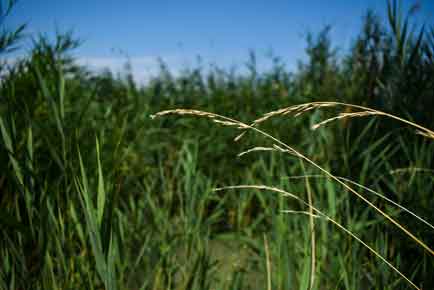Timothy hay, derived from Timothy grass (Phleum pratense), is a widely utilized forage crop, particularly in temperate regions. This paper provides an in-depth review of its nutritional content, agronomic practices, and environmental considerations, along with its role in animal dietary regimes.
Timothy grass, a perennial bunchgrass, is highly valued in the forage industry for its palatability and digestibility, especially among equine diets. Its suitability in cooler climates and relatively easy management make it a popular choice for hay production.

(Timothy Grass)
Nutritional Profile of Timothy Grass Hay
Timothy grass hay is highly regarded in the world of animal feed due to its well-balanced nutritional profile, making it a staple in the diets of various herbivores like horses, rabbits, and guinea pigs. One of the key features of Timothy hay is its high fiber content, which is essential for the proper functioning of the digestive systems of herbivorous animals. The fiber aids in regular digestion and helps prevent issues like gastrointestinal stasis, especially in animals like rabbits. Timothy hay for rabbits helps keep them healthy. Furthermore, Timothy hay has a moderate protein level, typically ranging between 7% to 11%, which makes it an ideal feed for adult animals that require a maintenance diet. This level of protein supports healthy muscle development without the risk of excessive weight gain or other health issues associated with higher protein diets, such as in alfalfa hay. Timothy hay for horses comes with a specific diet needed for some.
The significance of Timothy grass hay beyond its surface benefits. One notable advantage lies in its low calcium content, making it an invaluable option for animals susceptible to urinary tract issues like bladder stones or sludge, aggravated by high-calcium diets. This insight is crucial for pet owners seeking optimal dietary choices for their beloved companions.
Moreover, Timothy hay offers a treasure trove of essential vitamins and minerals essential for overall animal health. From Vitamin A and D to magnesium, potassium, and sulfur, this hay variety delivers a comprehensive nutritional package vital for maintaining robust bones, teeth, and coats. By emphasizing these key nutrients, we not only highlight the hay’s holistic benefits but also cater to the needs of health-conscious pet owners searching for optimal dietary solutions.
Incorporating strategic keywords like “low calcium content,” “essential vitamins and minerals,” and “nutritional balance” ensures our content resonates with targeted audiences, driving traffic and engagement. By articulating Timothy hay’s nutritional prowess and palatability, we establish it as the preferred choice among discerning livestock owners and their cherished animals. This comprehensive approach to content optimization not only boosts visibility but also establishes authority in the competitive pet care landscape.
Agricultural Practices for Timothy Grass Fields
The cultivation of timothy grass bale for hay production involves specific agricultural practices that ensure the growth of high-quality forage, suitable for livestock feeding. One of the critical aspects of growing Timothy grass is soil preparation and fertility management. Timothy grass thrives in well-drained, fertile soils with a neutral to slightly acidic pH. Before planting, soil testing is essential to determine the nutrient levels and pH, allowing for the appropriate amendments, such as lime or organic matter, to optimize the soil conditions. Fertilization is a key component in Timothy grass cultivation, with the application of well-balanced fertilizers to provide essential nutrients like nitrogen, phosphorus, and potassium. Nitrogen is particularly important for the growth of lush, green grass, but it must be carefully managed to avoid excessive growth, which can reduce the hay’s quality.
Another important practice in Timothy grass farming is the management of cutting and harvesting times, which significantly impacts the quality of the hay. The ideal time for the first cut is usually in the late bloom stage, when the grass has reached its peak nutritional value. Subsequent cuts can be timed based on regrowth and weather conditions, typically occurring every 30-45 days. Proper timing ensures that the hay has the right balance of fiber, protein, and other nutrients. Moreover, harvesting practices need to be carefully executed to maintain the quality of the hay. This includes cutting the grass at the correct height to promote regrowth and using appropriate machinery to prevent soil compaction and damage to the grass. The hay should be properly cured in the field, with a target moisture content of around 15-20% before baling, to prevent mold growth and nutrient loss.
Environmental Impact of Timothy Hay
The cultivation of Timothy hay, like any agricultural practice, has both positive and negative environmental impacts that are important to consider. On the positive side, Timothy grass fields can be beneficial for the environment in several ways. As a perennial grass, Timothy can help in soil conservation, reducing erosion by establishing a strong root system that holds the soil together. This is particularly advantageous in areas prone to soil degradation. Additionally, Timothy grass fields can act as carbon sinks, absorbing carbon dioxide from the atmosphere and storing carbon in the soil, which is a crucial factor in mitigating climate change. The grasslands also provide habitats for a variety of wildlife, including birds and beneficial insects, contributing to biodiversity in agricultural landscapes.
However, there are environmental concerns associated with Timothy hay production that need to be managed responsibly. The use of chemical fertilizers and pesticides in conventional Timothy hay farming can lead to soil and water contamination if not managed correctly. Over-application of fertilizers can cause nutrient runoff into nearby water bodies, leading to problems like algal blooms and eutrophication, which harm aquatic ecosystems.
Role in Animal Diets Made of Timothy Hay
Timothy hay plays a crucial role in the diets of various herbivorous animals, particularly those kept as livestock or pets, such as horses, rabbits, guinea pigs, and other small mammals. Its high fiber content is the cornerstone of its importance, as adequate fiber is essential for the proper functioning of these animals’ digestive systems. For example, in horses, Timothy hay helps maintain gut motility and prevents issues like colic and laminitis, while in smaller animals like rabbits, it aids in dental health by ensuring adequate wear of their continually growing teeth. The fiber also promotes a healthy gut microbiome, crucial for effective digestion and nutrient absorption. Additionally, the relatively low protein and calcium levels in Timothy hay make it a safe and healthy staple for adult animals, providing necessary nutrients without the risks associated with richer feeds like alfalfa, which can lead to obesity and urinary issues in certain animals.
Beyond digestive health, Timothy hay serves as a source of essential vitamins and minerals that contribute to the overall well-being of animals. It contains beneficial nutrients like Vitamin A, necessary for good vision and immune function, and Vitamin D, important for bone health. The presence of minerals like potassium and magnesium in Timothy hay supports various bodily functions, including nerve transmission and muscle function.
Storage and Handling of Timothy Hay
For optimal quality and nutrition, proper storage and handling of Timothy hay are vital. To preserve its effectiveness in animal diets, keep the hay dry and shielded from rain and excess moisture, which can cause mold and nutrient loss. Store Timothy hay in a dry, well-ventilated barn or shed, away from direct rain and dampness. Use pallets or racks to elevate bales, preventing ground moisture absorption and promoting air circulation. Avoid storing near walls prone to dampness. Good ventilation prevents condensation buildup, maintaining hay quality. Timothy hay is crucial for herbivorous animals like horses. Sustainable cultivation practices support environmental health and biodiversity. Research into advanced farming methods can enhance yield and quality while assessing environmental impacts.

(Dry Timothy Grass)

